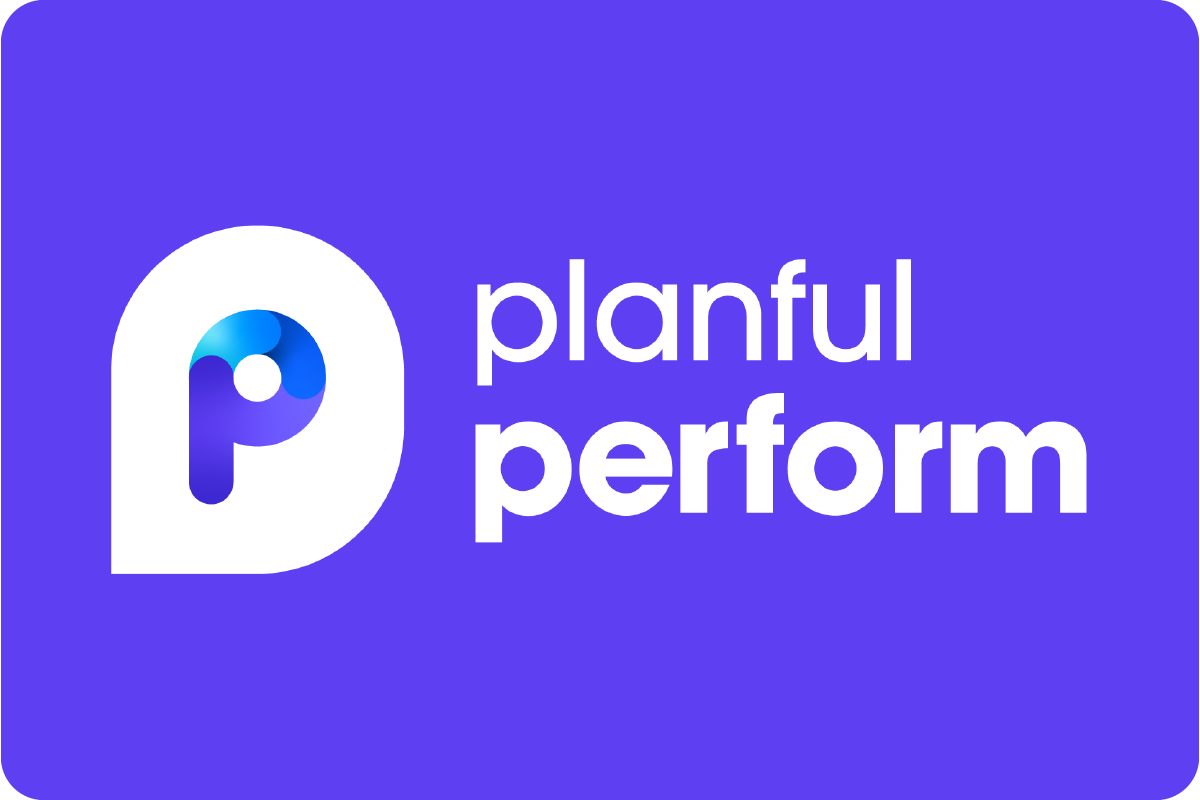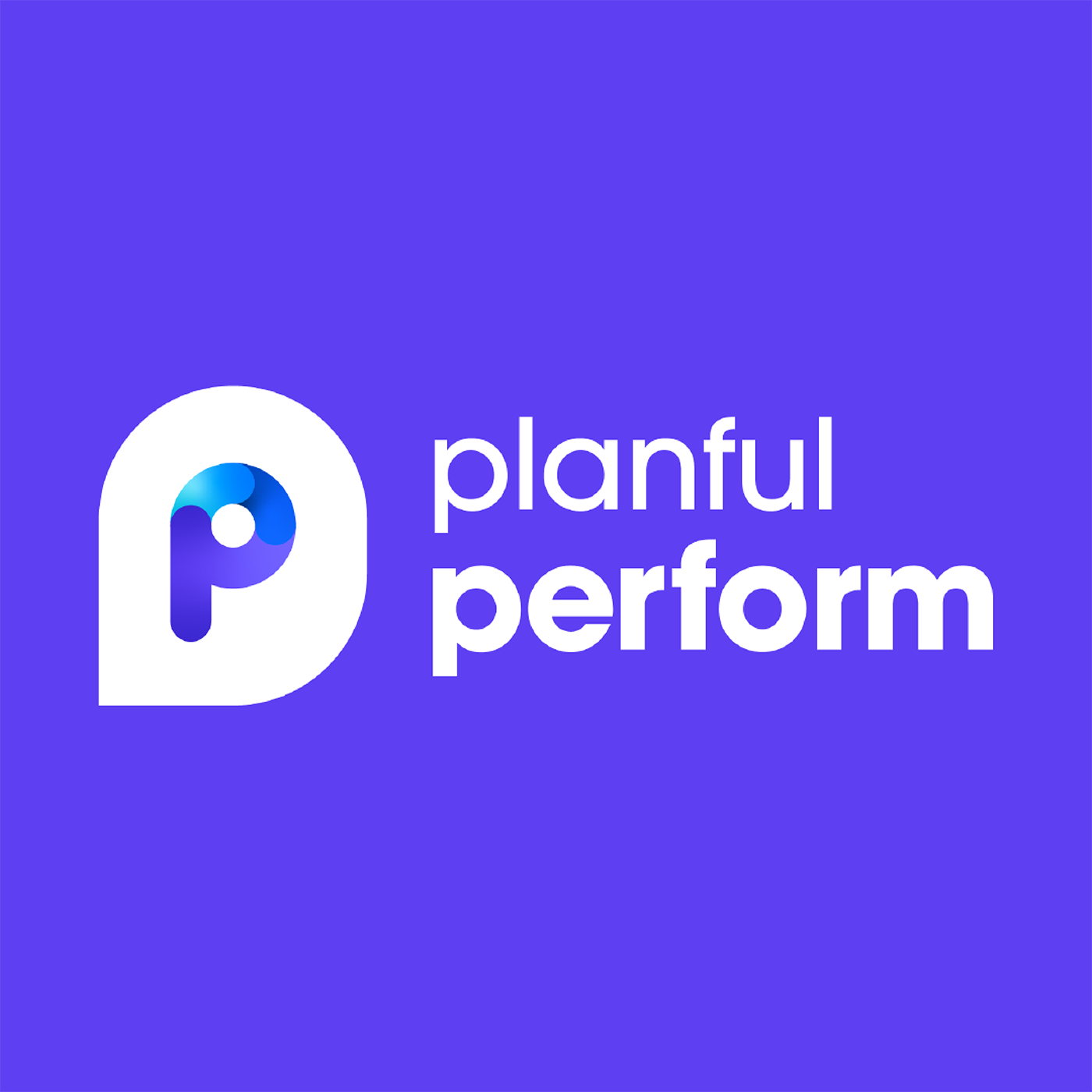How National DCP Uses Bespoke Financial Reports to Cut Through the Clutter | Michael Zambetti
- 0.5
- 1
- 1.25
- 1.5
- 1.75
- 2
Michael Zambetti: So I'll get to that a little bit later. Then that'll kind of tailwind into the repeatable reports and ensuring consumability. So being the point that we really want to be able to tailor to the target audience and make sure that whatever we're doing, we're not spending time doing the reports over and over again, rebuilding out other stuff. We are just on cruise control and just continuing to pump out the stuff that we've already made in the past. So with that being said, we'll cover a number of different things. Dynamic reports used in report collections, spotlight reports, a little bit different than that Excel based reporting, if you're familiar with that and also dashboards. And the last one we'll get into is just some random tips and tricks, which I found to be very useful and I also found to be very painful when we weren't leveraging them as well. So tell you about myself. So I'm Michael Zambetti, I'm from Atlanta, Georgia, went to UGA, so was a great year for the Dogs so that was a great time. Also, I actually have a seven month old daughter and I have one on the way, and this is actually her right here, rocking on the socks. So I've been a part of National DCP for the past five years and National DCP, I'll get into a little bit what we do later, but we do all supply chain for Dunkin' Donuts. And I start on the ops team and kind of progress throughout different parts of the organization so anything from analyzing the productivity, pumping out reports with a whole bunch of KPIs to doing bunch of DCFS and payback models, and then started taking on a little bit more of the analytics responsibilities. So it's been really a pleasure to be able to not just manage a simplistic finance team, but also be able to add that advanced analytics, the machine learning and AI, because I'm a huge advocate for that personally, as far as that's really, I feel like where the way the future's going is being able to use that advanced functionality and kind of use that in tandem with finance. So I've had the pleasure of reporting on a whole bunch of different facets within our organization. And when I first started, I started five years ago with National DCP, which is also the exact time that we were implementing Planful in the first place as well. So with that, it's kind of funny, honestly. So the very first time when we started implementing Planful, obviously had a few growing pains, but then as things started getting off the ground, the CFO and the CEO were just kind of mind blowing at all the level of information that we can get. So it was kind of unfortunate as an analyst at the time, because I had so much more work to do, but at a certain point, probably I'd say after a year after we implemented, then it's we have so much more insight into stuff that we were never even thinking about reporting on before, because we had to go into all different Excel documents. And so with Planful we've had a whole bunch of different things. So we actually have a three day close now. So very efficient, as far as that goes. We've done a long range plan before. It was kind of just very high level, like here's our revenue projection, and here's just everything else as a percentage of revenue. But we actually built out a whole long range plan that went down to repairs and maintenance, how much are we expecting for that, billions and inaudible, CapEx, a whole bunch of details. So did a whole bunch of stuff for that. So at National DCP, I touched on it a little bit a second ago. So we really do the entire supply chain from start to end for Dunkins. So that's anywhere from sourcing the product to purchasing it, bring it in our warehouses, putting it on our trucks and having the trucks go and deliver that product into the franchisee's door. So really an a to z, I would say supply chain, as far as that goes for supporting Dunkin'. So the overall objectives, what are we trying to see out of this session? So pretty simple. We want to see how can we find our data a lot more quicker and more efficient. And by doing that, we're going to be able to spend a lot more time on analyzing the data. We don't want to just be spending it on trying to find it. We want to be spending on analyzing it. And by doing that, we're able to have a lot more actionable insights for our business partners within the organization. So that gets us started into accessing data quickly. So verify data. So this is, again, this is not technical at all, which I absolutely love. And that's also why it's fantastic for new employees and to introduce them to that. So it's fantastic for navigating the hierarchy. So let's say you have a new employee and they don't know what your specific general ledger account numbers are, or maybe they want to know what your repairs and maintenance general ledger is, you can go and type that in real quick and find it very efficiently. And I also personally like using this a lot as well, where let's say that a number isn't lining up with what I thought it would be. You go into there real quick in the system and you can see quickly, okay, is it a reporting issue or is it an issue with what information is in the system? So if you guys, how many people use verified data in here? A lot of people, there's a lot of people who don't honestly. So yeah, no, this is a fantastic tool that's very simple and can just kind of helps you navigate the hierarchy, especially if you're not as familiar with it, you haven't memorized it due to incredible hours spent doing finance. Next piece would be analyze and drill through. So there in spotlight, this is what I consider to be the quickest way to get any answers for my executives and not even just executives, but any superiors, any VPs, anything like that. So you're able to just drill through really quickly into your information. So let's say you have your operating expenses, you can drill through real quick and with a click of the button and you can see what are your people expenses, what are your utilities, what are your facility? And then you can drill through again, if you identified your variances within facility, and then you can say, okay, you have rent, property taxes. So you're able to kind of drill through very seamlessly and you're able to drill out as well. So you're able to navigate that drill through capability fantastically. Also what we actually realized recently. So we did bring in CFO solutions to give us some training on dynamic planning and some advanced functionality of this and we honestly haven't even used it that much, but it also has a drill through capability. So for us, we do a lot of very detailed budgeting and forecasting so we look at, we do a lot of subline level projections and sometimes it's not so easy to be able to access that and query that and so with this, you're able to access that directly within Excel. And so let's say that you want to drill through and see what are inaudible different, your maintenance contracts for IT, for instance, you can drill through within Excel and you can see all that subline detail within Spotlight. So you never really have to go into the Planful tool. The next one, it's a little bit more, I would say dynamic in nature, especially when it comes to formatting, which we love personally. So that's just Spotlight Excel based reports. So these, I would say the real benefit of these Spotlight Excel based reports is you're able to format it any which way, very familiar. It's just like Excel and it's just tied directly into your data within Planful. So with that, you can do, I have some things named here. You can have named ranges, you can have offsets, you can reference other spreadsheets, other workbooks. It's as flexible as you would like it to be and the benefit with being so flexible as well is I know there's some executives or companies who are very honed in on a very, very specific formatting. And while you can really try to manipulate some of the formatting in the other reports, everything is possible with this one in charts and tables, and you can really just make it however the people want it. It's just tied to your data so you never have to go and try to find that data in the future. And a big way of how we use this as well is we use this for all of our different, our operations metrics reporting. So anything that we have just on a cadence, especially for people who don't really know Planful, all they have to do, especially if you have to linked up to substitution variables is they just go and press that little refresh button at the top and all the new numbers pull in. So it's great for people who don't have any experience with Planful, they don't have any technical experience. They don't need any. They need to press button. That's all they need to do. And for our company specifically, we have two, I'd say it's really our outbound logistics and our accounting team. So our outbound logistics, they look at it to see how many miles were we running. They don't see all these different metrics reporting, which have 50 tabs in it. They just have their own report. They pull their miles and they just press that little button every single month and then they're able to see how they're doing on the routing and how efficient the routing is. And similarly, and I'll talk a little bit about this more later, but our accounting team as well, so that they never use Planful too much, but they really use it a lot during close because our system, it updates automatically every hour on the hour. So it's almost a live feed, I guess you can say. So they can see basically immediate feedback. Whenever they made a journal entry, they can kind of see how is their general ledger looking and what do they need to do, what accruals need to happen, what's missing and so on and so forth. And that kind of tail spins into the repeatable reports and ensuring consumability. So the Spotlight Excel base reports, that is a fantastic tool to tailor to your target audience and ensure that you have tons of people who can consume your reports in a very seamless manner. Similarly, you have dynamic reports which are in Planful in the PCR. So it's the internet interface. And this is fantastic where it's almost just like a central repository and everything is there in the internet interface. And for instance, we automate all our financial statements so anyone can see that. You can favorite it and this is great, especially if you have, we use this for our operations guys. So for instance, our operations leadership, if they want to see how they did two months ago, they have one folder of all the reports that they need and they just go and click there and they have all the information at their disposal. So this has been a lot better for us. And we rolled this out, I would say to the operations guys, I would say about three years ago, because what happened before is they would come to us and be like," All right, what are our numbers looking like, what's our budget for this month, what's our forecast for this month," except when you have nine different distribution centers and you have tons of different leadership people asking you that you're basically getting a nonstop feed in your email box, asking for their budget, which should be super simple to get. So I'd say that's the best benefit of this, one, is it really enables your end users who are not technical to see that information and it takes time off your plate that you would otherwise have to spend just sending out information that they should already be able to access. And dynamic reports. One of the best parts of dynamic reports is to use in report collections. So report collections, you can burst any type of report on a number of different dimensions. And so what we use this for actually is, so we use it at month end close, forecast and budget. So it's almost data overload, I guess you can say where our CFO, he wants to see absolutely every single, some inaudible is really in the weeds and some are not necessarily as much in the weeds and for our CFO he wants, or our previous CFO, he wanted to see all the information out there. And so for us, we basically just take a bunch of reports that we already previously made and then we burst it on every single department. We have it on every single profit center. And so we end up having 150 tabs of different reports bursted on different dimensions and you just press a button and then you send it out. It's like, here's all the information, knock yourself out. And then we do all of analysis on other information and we don't, and if he needs answers, we give it to him. But either way, he kind of has that in his back pocket so he can reference it whenever he wants. And we actually use it highly in the month end close process as well. So our accounting team, after they finish closing the books, they actually run the report collection. So again, not very technical on the Planful space or any other type of really advanced technology for that matter. But what they do is whenever they pump that out, they can just see everything exactly how they need, and they see if they made the journal entries right, if the books are good to go. So that's a very integral part that is the very last step I would say, of the month end close process. You know what? I'm going to point out one more thing with this report collection, which we use as well. So we highly use the substitution variables and we actually have our, we have three columns. So we have our actuals, our forecast, and our four columns, actuals, forecast budget and prior year. And our actuals actually set up as a substitution variable as well. It's not just set up to the actual scenario and the reason for that is whenever we create a new forecast, you can just adjust it very dynamically there, where for instance, let's say we want to see our full year forecast versus full year budget, you don't have to do any manipulation, you don't have to create any new reports. All you do is you change that substitution variable for the actuals, which is you just think of it like the first column. And you just change that to whatever your forecast is. Next column is still your budget. And then you change it to, let's say it's year to date, you change it to December and so then you can see a full year forecast versus full year budget. So that's also a very integral part of all of our different projection processes. The last one is Spotlight reports, which we personally don't use as much because we don't really leverage dynamic planning, which I feel like is probably one of the biggest benefits of these reports specifically. It's very easy to toggle. So if you have an end user, like in this instance, if you had, screen's a little fuzzy, but if you wanted to toggle company, for instance, you can just very quickly change that and it pulls through almost instantaneously and it also constantly updates as well so you don't really need, if you already have it pre saved and it's saved up in the cloud, you don't really have any type of intervention that is required to continue to maintain this. And it's also a huge benefit of being able to see it in the internet interface. So we, again, we don't really use this too much, but it's very quick. And I'd say one of the biggest benefits that I've realized that makes us kind of want to use it a little bit more is the dynamic planning feature of write back. So for those of you who don't know what that is, essentially, you can do your projection within Excel. So where you have some users, I know that's some people's request is they want to do what they're familiar with. They want to press their buttons and Excel, they don't want to go and try to learn some new software and some new internet, so you can set up it in Excel and you can import your projections directly from Excel. And this is a pretty exciting part, which we haven't started to use too much. I actually just recently, I'd say about it, like six months ago, I started creating some dashboards and I want to show the CEO more of like an executive summary, what can you really gain from Planful, because he's never used Planful ever and we found it for five years. So how can I open the CEO into seeing something new? And so I created the dashboard and he absolutely loved it. I mean, I unfortunately put a lot more work on my plate because then he wants six more dashboards. But either way he, he said this quote, which I thought was pretty impactful and it says," Things that get inspected, get respected." And what he meant by this is he wants me to crank out these dashboards and he knows his ops people don't look at Planful as much as they do, but if he's looking at the dashboards, all of his guys are going to make sure that everything checks out and is good to go as well. So that's a very exciting one. And I don't know if anyone saw Kelly's presentation yesterday on dashboards, but I thought that was really cool and she was able to make the dashboards various that a lot more than the garbage I showed Scott, but it is, I highly suggest seeing that on the demand afterwards. And this is just an example of the dashboards right here. So I think the whole benefit of this is really providing an executive summary, a health check, seeing what your cash is like at any given point in time, just one quick snapshot of what's happening at your business and the main, maybe your main KPIs are driving it, your margins, your inaudible whatever it may be. And then that brings us to our last category, which is data structure tips. So over time I've realized through my own pains and struggles that there are some very small things that you can adjust on your end that makes reporting so much easier and so much smoother. So one thing is hierarchy management. It is so important to have your hierarchy set up exactly how you want your reporting. And I understand that there's sometimes regulations or you have your tax group who might want it set up in a specific way of how it's reported on a regulatory basis, but you also have alternate hierarchies. So you can set up a separate hierarchy. So they're still happy. It's still set up how you report it in a tax in, for regulatory reasons. But then you have a separate hierarchy, which you really do all you're reporting out of and it really facilitates drilling into things super seamlessly and really taking a lot of time off your plate in the future. So I think it's very crucial to see that. And also it's very important to maintain that consistency in your syntax. So for inaudible accounts, let's say that we have miles, for instance. We have route miles, shuttle miles and transfer miles. The code that we use it's ML zero one, ML zero two, ML zero three. So you're able to kind of see all of those and you're able to, if you have them all very similarly, you know how to access them all very quickly, as well, as opposed to if you have them very disjointed, sometimes a little bit difficult to find what you're trying to report. And the next one is attributes. So it's very beneficial and this is something that we don't use right now and we really should, but it's attributes are a great tool to use as well. If you report on certain facets of your report, let's say for us, we have fixed expenses, semi fixed and variable, and it's very important to be able to segregate those and you can do all that within attributes as well. So if you set that up appropriately, whereas right now, unfortunately what we're doing is we're doing it all on the back end. So after we export all of it, then we have it all in Excel and then we do some ifs and we try to find, do index match functions and try to find out what's a variable, what's a semi fix, but you can do all that in Planful. So that would save us so much more time in the future just being able to report it instantaneously. Same thing with scenario set up. Something that I noticed as well is people would want to know," Okay, what was the final budget of 2021? What was the final budget of 2020 because we have 2020 budget V four, V five, V six and we have that for all the years." So what I realized recently, which actually made a huge difference is make your final version the same name for every single year. So it's super quick whenever you want to change it from one to the other, if it's in the Spotlight, for instance, you just change it from 2020 to 2021. So it's again, super simple stuff, but it's just saved us so much time to be able to toggle our reporting. All right. And the next one is ERP system integration. So we use Dell Boomi, which it pulls in our SAP information directly. That's what's able to refresh our ERP every hour on the hour. So that's what really enables our accounting group to use it as a source of truth. Yeah, they're uploading journal entries and all that to SAP, but they use Planful to assist them in the close process. That's what helps speed them up the close process. They don't have to do it, whole export of the trial balance of SAP to make sure that they're doing stuff right. They just look at Planful. So that's, I think that's so vital and it's improved our month end close process. In addition to that, it's a lot less administratively burdening. So I know before we had to export from SAP and we had to export a whole inaudible balance and we had to upload that to Planful and people are asking us," Hey, when was the last time you loaded this?" You don't have to answer those questions anymore. It's live, it's live. There's nothing that you have to do. So I think that's so important and I know some people kind of delay that. They onboard Planful, they implement it and sometimes they delay that for a couple years or whatever. I think that is an integral part to really get in the ball rolling, at least it was for us. That was a real game changer. And also what I've seen before is with some people with dynamic planning models, they build out a whole robust model here and they're just trying to get all this different advanced reporting here, and they have another one over here. But what I've noticed as well is sometimes they don't speak to each other. So it makes it really clunky and makes it a real nightmare if you don't know where your actuals are. No one ever wants to have that problem so I highly suggest having them all speak to each other so then you have one source of truth again, and you maintain that integrity. All right. So that kind of brings us to our closing here. So kind of cover a number of things here. So one, just understand the quickest way to get your data. So pretty straightforward because you want to spend more and why? You want to spend more time on the analysis part, the fun part of finance, no one wants to just be digging through numbers all the time and doing month end close for 10 days, 15 days, whatever it is. You want to be spending time on the fun part, the analysis, how do you add value to your company? So you want to be able to understand, okay, here, pull that information. Good. Now I can get back to my analysis or use that as an integral part of your analysis. So I love that a lot. And then also I think it's very important to keep your end audience in mind so that you're able to build out those reports and you know who are you building the report for? Is the report going to need to be able to produce next month and the month after that or is it just a one time thing and knowing how technical is your audience so then you can kind of know what report do I need to build for them so that they're using this and that I don't have to spend more time just throwing information their way on a consistent basis. And I'd say that's probably also a way that we've really saved the most time there. I'd say more the mid- month analysis where we just have random ad hoc assignments and we're able to just be spending all the time figuring out the problem as opposed to finding the data to solve the problem. So I think that's huge as well. And I would say also, so talking about time savings, a little bit, something that we've done personally and what's kind of enabled for us is I know we've had one less accountant because we just don't need to spend that much time just digging into the granularity. Another thing is on my team specifically, we repurposed an individual from finance. Had two senior financial analysts. Now, we have a data analyst and a senior financial analyst because now we can kind of repurpose that job. We're not needing to spend as much time doing the analysis. So now we can have someone doing the machine learning and the AI and all that advanced fun stuff, and kind of have that tailwind into our finance reporting. And I'd say that last piece as well is you have to set up your infrastructure so that it really feeds into what you're trying to do as well. You're providing gas to your machine so that it's able to keep running. So I think it's very important to have that as opposed to fighting your infrastructure and having your infrastructure, changing it and deducting from your rollups because you only want to be reporting this bottom part here. So I think it's very important to be able to have it set up in a manner that really makes your reporting really easy. With that being said, I think that's about everything. So if anyone has any questions I'm here, but thank you everyone for your time. All right.
Speaker 2: How much non- financial data do you have in... and how did you make setting up those accounts for that non- financial information and that exchange really seamless? It sounds like Del Boomi was, Hey, this is sort of the way they would make our ERP and Planful talk to each other all the time. There's a lot of non- financial information we'd like to get into Planful for, including in our templates or reporting, et cetera, but we don't have a fast way to connect our data warehouse to Planful. So I'm wondering if that a challenge you've had to overcome.
Michael Zambetti: Yeah, yeah, no, it's a great question. It definitely is. So for instance, one of the main things I do is margin analysis. So if we were to look at it in Planful, we see revenue and cost of sales. That doesn't tell us all the different components, all of our different markups that we're charging and all. That we house in our BI tool, which is, I kind of look at like a pivot table on SAP. And so that has all of our different information. So we pull that in from BI. And so then what I did in order to be able to have that reported and have all that detail that you're talking about is I set up a data load rule. That's kind of connected to that. So it just does index matches off of the different months. So for instance, I just have absolutely everything pulled and then my index matches are year 2022, month one, month two, month three, month four. So I never touch anything on month to month basis. After we have all that detail, I refresh it in BI and then I just save it on that data load tab and upload it. So basically, you set up the data load rule one time and you never have to do it again because it just automatically pulls in that data whenever it's available.
Speaker 2: And did you have to make independent statistical accounts for all of those?
Michael Zambetti: We did.
Speaker 2: inaudible.
Michael Zambetti: We did, we did. Yeah. Yep, yep. That's exactly what we did. And then also we do a whole bunch of other KPI reporting as well. So I'd say it's a very similar thing that we do for that as well. So all of our routes are miles, all the stuff that's not in the general ledger, very similar thing created data load rule, which kind of queries off of our operation metrics report and then you just uploaded it to the data load rule. Yeah. Good question. All right. Thank you everybody for your time. I appreciate it.
Speaker 3: inaudible.( silence)
DESCRIPTION
For financial reports to truly offer valuable insights, they need to be more than just numbers on a page. Leveraging the vast reporting capabilities including dashboards, dynamic reports, and Spotlight for Office can provide you with the reporting necessary to run your business. Learn how National DCP, a foodservice supply chain solution provider, cuts through the clutter of data to build bespoke financial reports tailored to different use cases and audiences. Michael Zambetti, Manager, Finance & Data Analytics, will explain how the company uses Planful as its central source of financial truth to build and deliver reports that work for every corner of the business. You’ll also learn how National DCP is using Planful to pull teams out of spreadsheets and create more organizational buy-in using various reporting tools, report collections, and structured planning templates.
Today's Guests








